sierraclub.org - sierra magazine - january/february 2010 - view from the vortex


View From the Vortex
Why photographer Clark Little risks his neck to share a vision of the natural world that few ever see for themselves
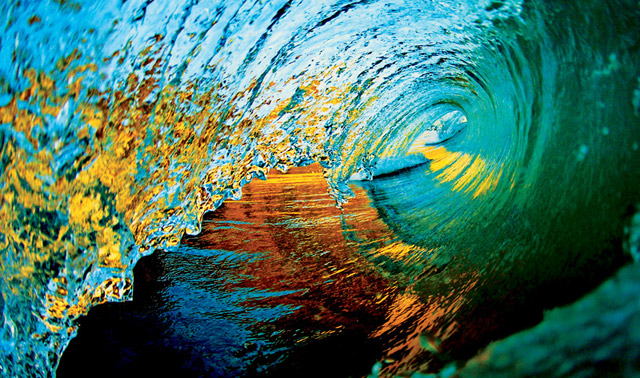
NEAR KAENA POINT, OAHU
"The sun's actually behind me here, so those yellow and orange reflections are mountains and sand."
It's winter in Hawaii, and massive surf hammers Oahu's north shore. At Waimea Bay the muscular shore-break waves, as thick as they are tall, send concussions across the beach, tickling sunbathers' bellies. While dozens of long-lens photographers shoot from safe dry-land perches, Clark Little wades into the water to make his living and find his peace. Braving currents and rolling boulders and the risk of a broken neck, he positions himself and his Nikon in the surf's heaving maw so others can see what he's seen for decades.
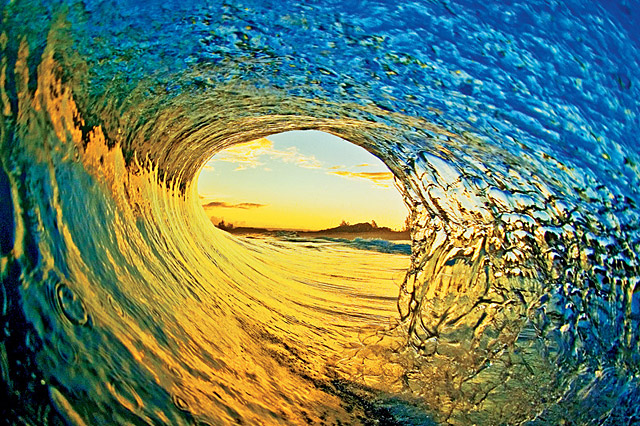
NEAR KAENA POINT, OAHU
"Early morning. The sun's not up yet. I remember this wave because the tube was so perfect. This one you could surf."
Little, 41, acquired his first good camera only three years ago, after his wife, Sandy, suggested they buy a scenic wave photo for their house. Clark scoffed, saying he'd get the shot himself. After all, he'd been surfing the north shore for 30 years, and still held a place in local lore for his mindless antics of the 1990s, when he'd made repeated death-defying attempts to ride Waimea's thumping no-hope shore break. Sure, he had zero experience as a photographer, but few people had spent as much time getting their butts kicked by such waves.
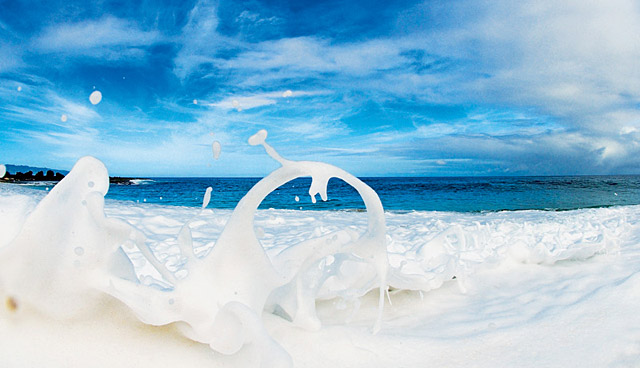
KEIKI BEACH, OAHU
"Sometimes I just stay near shore and twirl around in the whitewater like a little kid."
First he bought a "cheesy" point-and-shoot camera and a housing to keep it dry. Intrigued by the out-of-focus results, he soon invested $4,000 in professional-grade gear. Two years later, he quit his supervisory job at a botanical garden to become a full-time wave photographer.
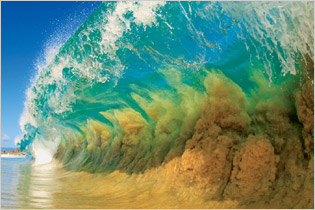 KEIKI BEACH, OAHU
KEIKI BEACH, OAHU
"This is a big, mean one, maybe 10 feet on the face. It's got to be drawing water fast to suck up sand like that."
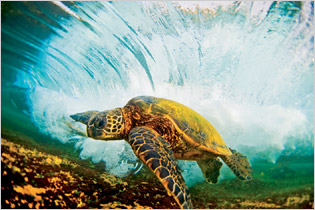 LANIAKEA, OAHU
LANIAKEA, OAHU
"I've seen turtles take beatings in the shore break. They pull their heads into their shells, get pummeled, and they're fine. Those buggers are hard."
"I couldn't be more appreciative," Little says of his midlife career change. "I get chicken skin every day."
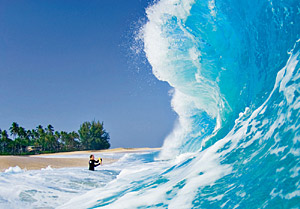 "Yeah, I get slapped sometimes," Little says. "But it's a good cleansing."
"Yeah, I get slapped sometimes," Little says. "But it's a good cleansing."
Today he sells more than 150 prints a month through galleries and his Web site, and last year one of his photos ended up in the hands of a rising star in the world of recreational bodysurfing: Barack Obama.
"Everyone thinks I'm a nut, out there rolling around in the sand for hours every day," Little says. "But it's never redundant. The tide gets lower, the backwash hits differently, there are different clouds in the sky. I feel like I belong there--like I'm a fish or a dolphin. I don't care if the surf's 3 feet or 15 feet, I just love being out there, with or without a camera. And I hope that people feel some of the same feelings when they look at the photos." —Steve Hawk
ON THE WEB To see more of Clark Little's work, go to clarklittle.com. His self-published book, The Shorebreak Art of Clark Little, was released in November. Watch a video of his attempts to surf the Waimea shore break at http://bit.ly/shorebreak.
Holes to Heaven
By Jack Johnson
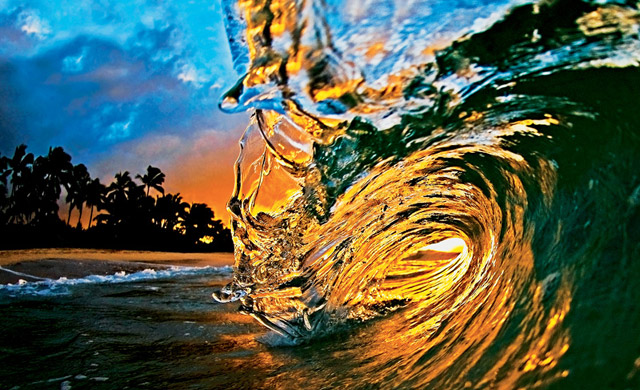
NEAR LANIAKEA, OAHU
"This one's small, only about two feet, so you get more color coming through the lip. It's like there's a cane fire behind it."
About a year ago a friend of mine handed me a postcard of a wave and asked if I knew where the photo was taken. The image was from inside a tube looking out. I'd looked at every issue of every surf magazine every month when I was growing up, so I'd seen a million images taken from inside the tube. But this one was different—huge, shallow, deadly. I remember thinking, "That photographer must have gotten slammed." I stared at it for a long time before finally flipping it over. When I saw Clark Little's name, it all made sense.
I grew up with Clark, and he was always just plain nuts. While everyone else surfed the life-threatening but somewhat rideable waves at Waimea Bay's famous deepwater break far offshore, Clark alone tried to surf the bay's shallow shore break, paddling into life-threatening but completely unrideable waves. Over and over he would take beatings, and then, every once in a while, he would get to his feet in time, maneuver himself into the tube, and stand there appreciating a view that very few people ever see.
Luckily for the rest of us, Clark eventually went back out there with a camera. And now we can all enjoy those same brief moments of bliss and not go home with a broken board, a bruised butt, and a bathing suit full of coarse Hawaiian sand.
WEB EXTRA See a slideshow of more Clark Little photographs.
ON THE WEB Read about singer-songwriter Jack Johnson's environmental efforts at jackjohnsonmusic.com/greening.
Photos by Clark Little